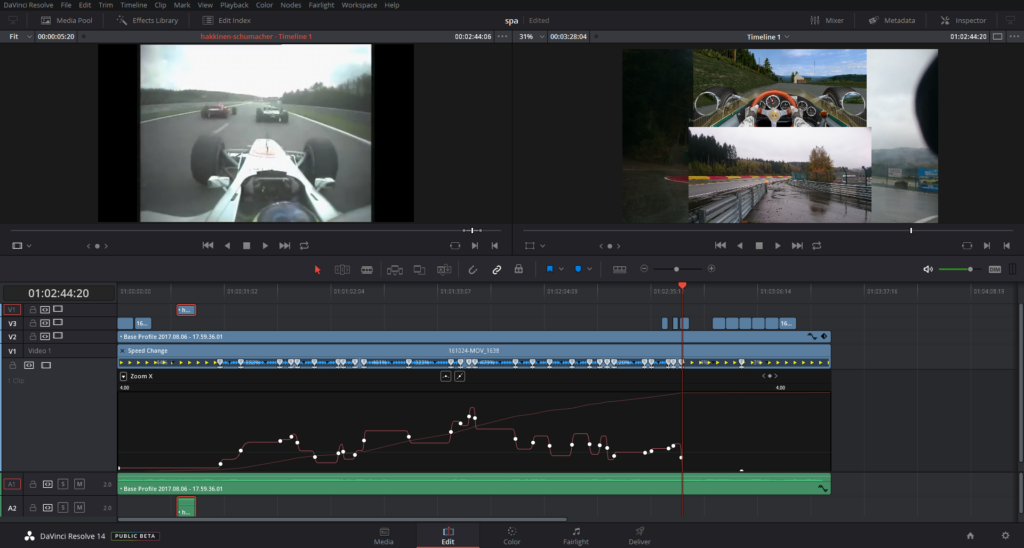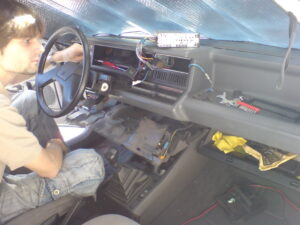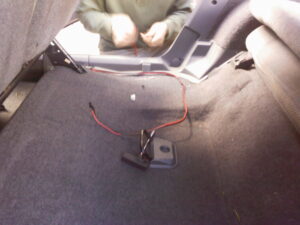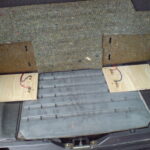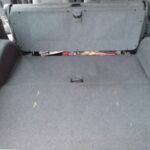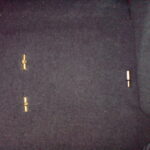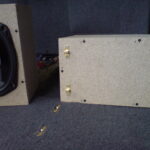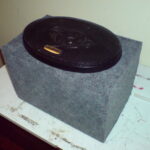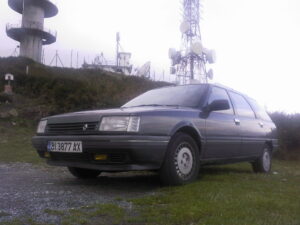Track Tour Episode 1: Circuit de Spa-Francorchamps (1967 edition)
Last year I went on a business road trip to Germany. On the way back I quickly stopped by several classic tracks close to my return route (some of them now partially or fully abandoned).
One of them, as you may have guessed by the title, was the belgian track of Spa-Francorchamps.
I wanted to make a quick comparison video of some race simulators to the real thing. So here I am, months later, having finally decided it’s about time I learn how to edit videos. I initially tried the open source software OpenShot. Unfortunately, I found too many bugs related to speed adjustment, which was absolutely required to synchronize my driving with the fastest F1 replay.
Eventually, I had to settle with the non-free non-opensource DaVinci Resolve:
To create the subtitles I used Subtitle Edit. I guess I could have used Youtube’s built-in subtitle editor too.
And here’s the resulting video.
It could definitely be improved, but I’ve ran out of Sunday afternoon already:
Software steadicam – Or how to fix bad cameramen
So you’ve just come back from vacations (wohoo), having filled 10 gigs of photos and video, only to discover you’re a (let’s be honest here) shitty cameraman without your tripod?
Fret not, for this article will show you the secret to solve your problems!
In an ideal world, your hands are as steady as a rock, and you get Hollywood quality takes. In the real world, however, your clumsy hands could use a hand (hah!).
So here’s your two main options:
Hardware solution (for use while filming)
This is the proper solution: a system that will compensate for the vibration of your shaky hands and the movement of your body while walking – not unlike the springs on your car allow for a pretty comfortable ride through all sorts of bumps.
Ideally, it will compensate for all the 6 axis (3D traslation + 3D rotation), but in practice you may be limited to less than that. Unfortunately (for most), this depends on how deep your pockets are (buying a ready-to-use steadicam, ranging from 100 bucks to several thousand), or on how handy you are with your toolbox (building a home-built equivalent).
The result could (in theory) be similar to this:
(ah, yeah… a segway, minor detail)
Software solution (for use after filming):
If you can’t spare a segway + a steadycam backpack, there are affordable alternatives. And if you already have many shaking, blurry videos lying on your hard disk, then this is your only option!
We’ll rely on PC software to fix those videos. This, you can do for free at home. There are some payware software packages that may produce slightly better results: but what I’m going to show you is freeware, very quick to use, and good enough quality for most purposes.
The software method may not be that good when compared to an actual steadicam, but hey, it’s better than nothing!
The steps:
I’m not going to go much into details, so here’s the basics.
- Download VirtualDUB, an open source and free video editing software.
(Make sure you can open your videos. E.g. you may need to install the ffdshow-tryout codecs and set them up, or whatever; Google is your friend! 🙂 ) - Once you can open your videos, you have to download the magic piece of the puzzle: Deshaker.
(This free tool – though unfortunately not open source – will do all the important work) - Now open your video, add the Deshaker video filter, choosing “Pass 1“.
(If you have a rolling shutter camera (most likely), and know its speed (unlikely), you can also correct it by entering the necessary values in there) - Click OK, and play the video through.
(This will gather information about motion vectors and similar stuff, in order to find out how to correct the shaking, if present) - Now edit the Deshaker video filter settings again, and choose “Pass 2“. Tweak settings at will, and click OK.
(A progress window will be visible for just a few moments) - Finally, export the resulting video, and you’re good to go!
For a more detailed guide (including rolling shutter values for some cameras), just read the official Deshaker page, or browse Youtube; there’re some tutorials there too.
The settings basically tune the detection of camera movement, as well as what method will deal with the parts of the image that are left empty after deshaking.
The results:
The video below is an example I’ve cooked for you. Each of the 3 processed videos uses a different combination of settings, and was created in no more than 20 minutes each.
I sticked them all together for your viewing pleasure. The improvement can be easily appreciated!
That’s it. Happy filming! 8)
Bonus track
If you insist on using hardware solutions (good!), here’s a neat little trick that’ll allow some smooth panning (provided you’re not walking):
05.1.10Yuki TV
Akí teneis a Yuki en vivo y en diferido!
No estaba muy activa en ese momento, pero a veces se pone a dar vueltas por el sofa y no hay quien le haga una foto, así que mejor así.
09.11.09Puls, 256 bytes intro by Arriola
This post is twice the size of Puls 😯
05.16.09Little Big Planet feat. Daft Punk
Hacía mucho que no posteaba nada por aquí, así que ahí va un post facilón de mítico video empotrao xD
04.3.09Ladies and gentlemen, may I introduce you…
Just a small vid (edited by Silverghost) of the first day of my new baby bimmer, a 118D 5d. More info, pictures and a thorough review coming soon!
Un montaje (editao por Javi) del primer día del peque, mi nuevo 118D 5p. Otro dia con más tiempo le hago una review en plan, con foticos y esas chorradas 🙂 .
En efecto, éste es el digno sucesor elegido para el viejo Renault 21.
So yeah, that’s the worthy replacement for the now sadly defunct Renault 21.
03.8.09Mad oversteer
Some old vids in which I’m just the wheelman. Thanks to Darth Joules and Geert, the simracers who did the video capturing and editing (my crappy 1k ghz putter couldn’t handle all that stuff, 30 constant FPS was already a great achievement), and of course thanks to Eero Piitulainen for the excelent RBR physics (hope to see another physics engine of yours soon…).
Ahora lo que es en castellano: un par de viejos videos, de cuando solía quemar rueda (virtual) semanalmente, en este caso con RBR. Gracias a Darth Joules y Geert por la captura y edición, y Eero por el brutal motor físico que programó a contrarreloj para SCi y que aún hace vibrar a la comunidad. Una pena que el código se haya perdido en el limbo legal gracias a los 6 años de abandono, los Ferraris de dudosa legalidad estrellados, la mierda que salpicó a Warthog Studios por sus relaciones con cierta mafia sueca de blanqueo, las detenciones de algunos CEOs y los consiguientes enchironamientos, y weno… mejor no seguir que escribo un libro 😆
Richard Alexander Burns
January 17, 1971 – November 25, 2005
R.I.P.
12.1.08Bricotuning de audio para un Renault 21 Nevada – part 3
(…continuación de la parte 1 y 2)
Hola amigos atuneros! Me estaba dando pereza, pero por fin llega el tercer y último bricotuning de la serie! Voy a intentar no alargarme mucho, que ya está bien de tanto párrafo pa unos simples altavoces. 😉
Cableado del coche
Debido al lugar donde se iban a colocar los altavoces, nos pareció más comodo tirar cables desde el salpicadero hasta el maletero por los bajos interiores de las puertas.
Lo primero fue pinchar los canales traseros justo antes del conector universal. De esa forma, los woofers son independientes del loro elegido, por lo que en un futuro se podrá cambiar sin complicaciones.
Fue un poco complicado pasar los cables, así que no quiero ni imaginar las virguerías que hará falta hacer en un coche moderno…
Metimos con cuidado cable resistente por cada lateral del coche (uno por altavoz). Van por debajo de las cubiertas de plástico, como se puede intuir en la foto, de forma que no quedan a la vista.
Por suerte, el Nevada es amplio y sus 3 filas de asientos tienen mucha movilidad, asi que no tuvimos problemas para pasar los cables.
Montaje de los soportes y detalles finales
Para evitar cortos e incendios varios, los soportes de altavoz fueron hechos también de madera, a la cual atornillamos los hembras correspondientes a cada altavoz.
Dichos soportes fueron a su vez atornillados a la tapa que da acceso al compartimento de la rueda de recambio. De esta forma, se puede seguir accediendo facilmente a dicha rueda y herramientas cercanas.
Finalmente, compré tapicería de un gris adecuado por unos pocos lerus, y con cuidado forramos ambos altavoces.
Como una imagen vale más que mil palabras, aki tenéis 5000 y pico palabras: 🙄
Una vez estuvo todo en su sitio, di un paseillo al R21 para ver si los altavoces aguantaban al pasar por baches. Todo fue perfect a la primera, asi que no tuve ni que ajustar los muelles de los enganches.
Aparte, retoqué el bias para que los 4 altavoces saturasen a la par con los géneros musicales y ecualizaciones que suelo montar, evitando así quemar los dos delanteros al ser el cuello de botella.
Bonus final
Como premio por haber leido todas las explicaciones, os pongo un videocumental que montó Javi tras hacer de paparazzi aquel finde. Por desgracia, la mierda de calidad de youtube no permite apreciar los graves que saca el equipo, pero os aseguro que es más que suficiente para ese habitáculo 😀
Les chevaliers du ciel
05.17.06Now that’s [super]cool!
Estaba yo en mi habitación estudiando para el examen de mañana de eso (estructura de sistemas operativos), cuando mi estómago empezó a lanzarme indirectas para que le diera de comer. Me he dirigido a la cocina a por algo de papeo, acompañándolo con un refresco.
Como hoy es un día jodiamente caluroso (picos de 35º o así, segun me informaba mi querido wmweather), he ido a por unos pocos cubitos de hielo.
Mi frigorífico es normalucho. No tiene televisión integrada, ni cafetera, ni congela agua al vuelo, ni lo tritura, ni me hace los deberes. Amos, que es tradicional: rellenas el template de cubitos con un poco de agua, esperas unas horas y listo. A que mola..? 😛
Pues weno, yo había puesto los hielos hace unas 3 horas, así que he ido a comprobar si estaban ya helados mediante la avanzada técnica consistente en la medición de la fuerza normal ejercida por el fluído-sólido al intentar ser atravesado por mi dedo índice.
Por desgracia la mayoría de los cubitos eran todavía agua. Pero nada más sacar el dedo del template, el cubito de agua en cuestión ha empezado a convertirse en un cubo de hielo en cuestión de segundos, cual T1000 transformándose. Este efecto no es otro que el comunmente denominado superenfriamiento, en inglés supercooling. Algunos os preguntaréis a ver qué carajo es eso. He aquí una demo que he robado impunemente de la web de uno al que le ha pasado lo mismo:
Me ha sorprendido bastante, no por ser algo nuevo (ya había leido sobre el tema hacía unos meses), sino porque creía que las condiciones necesarias para que se diera el supercooling eran muy estrictas, y por tanto dificiles de conseguir por azar. O tal vez lo mío ha sido simplemente potra!
En cualquier caso, os invito a que lo probéis. Y a ver si alguien consigue que su dedo se quede congelado dentro también :P. Yo lo he intentado, pero solamente se congelaban las esquinas del cubito, quedando mi dedo rodeado por una capa de agua. Una pena. Imagino que harán falta algo más grande que cubitos de hielo, así que ya sabéis como mejorar el experimento 🙂
Por cierto, también existe el supercalienting, pero en ese caso no recomiendo a nadie que pruebe lo de meter el dedo, que igual salís escaldaos 😉




